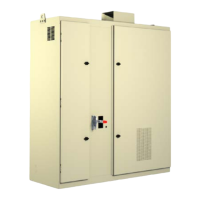What to do if Trane Chiller shows low oil temperature?
- LLuis ArmstrongJul 28, 2025
If you observe a low oil temperature while the Trane Chiller is running, ensure the oil heating mechanism is operational.





What to do if Trane Chiller shows low oil temperature?
If you observe a low oil temperature while the Trane Chiller is running, ensure the oil heating mechanism is operational.
What to do if Trane CVHE shows 'Condenser Water Flow lost'?
If your Trane Chiller displays a 'Condenser Water Flow lost' diagnostic, the unit requires a manual reset to restart. After ensuring water flow, manually reset the unit.
What to do if Trane CVHE Chiller shows current overload?
If your Trane Chiller experiences a current overload, check the electrical input to resolve the issue.
Defines the three types of safety advisories used in the manual: Warning, Caution, and Notice.
Outlines Trane's stance on responsible refrigerant handling and compliance with regulations.
Emphasizes the need for qualified personnel for field wiring to prevent hazards.
Details the mandatory PPE for technicians to avoid injury during service.
Recommends meeting or exceeding ASHRAE Standard 15 guidelines for installations.
Details procedures for inspecting the unit upon arrival for shipping damage.
Lists contractor responsibilities for unit installation.
Specifies required clearances around the chiller for service and maintenance.
Provides representative weights for chillers; refers to submittal for specific weights.
Details environmental conditions required for proper chiller operation.
Specifies requirements for the chiller mounting surface.
Provides guidelines for safely lifting and moving the chiller unit.
Explains the importance of isolation pads or spring isolators for sound and vibration.
Emphasizes the need for qualified water treatment specialists.
Details the use of flow switches and sensors for chiller protection.
Illustrates recommended water piping arrangements for evaporator and condenser.
Provides the correct sequence for tightening flange bolts to prevent leaks.
Covers general requirements for venting refrigerant relief devices.
Details requirements for sizing vent lines based on codes and ASHRAE standards.
Provides recommendations for installing rupture disk vent lines safely.
Specifies areas and quantities of insulation needed for the unit.
Describes the types and thicknesses of factory-applied insulation.
Details the specifications for the UC800 controller hardware.
Illustrates UC800 controller ports, LEDs, and wiring terminals.
Lists the four communication connections supported by the UC800 controller.
Step-by-step instructions for installing the Tracer AdaptiView display.
Mandates qualified personnel and adherence to codes for safe electrical wiring.
Warns about the dangers of power and capacitors during servicing.
Details the standard field power wiring requirements for Trane-supplied starters.
Provides guidelines for installing and connecting power supply wiring to the starter.
Warns about the extreme danger of working with energized medium-voltage circuits.
Describes the motor terminal box and its connection points.
Details safe practices for motor circuit wire sizing and installation.
Explains the integration of pump interlocks and flow switches for control logic.
Ensures evaporator pump is running and providing minimum flow for chiller control.
Ensures condenser pump is running and providing minimum flow for chiller control.
Describes the refrigerant flow and heat absorption process during cooling.
Details the oil circulation, filtration, and cooling for compressor lubrication.
Explains how compressor motors are cooled using liquid refrigerant.
Illustrates the five possible software states and transitions for chiller control.
Provides a step-by-step guide for starting the chiller daily.
Details the procedures for starting the chiller after seasonal storage.
Advises on oil and filter changes based on operation or oil analysis.
Explains the importance and procedures for maintaining the purge system.
Provides a method to determine when leak checks are needed based on purge data.
Covers refrigerant handling, charging, and leak testing procedures.
Details the steps for safely removing and installing waterboxes.
Specifies torque values for waterbox bolts and weights for different waterbox types.
Lists general inspection items required before Trane performs start-up.
Details the steps Trane technicians perform for chiller start-up.
Covers checks for continuity, meg test, terminals, and IGVs.
Details maintenance for starters, AFDs, and related components.
Includes inspection for fouling, scaling, and flow devices.
Covers procedures for checking purge times, performance logs, and pressure leaks.
Provides fields for recording evaporator, condenser, compressor, motor, and purge data.
